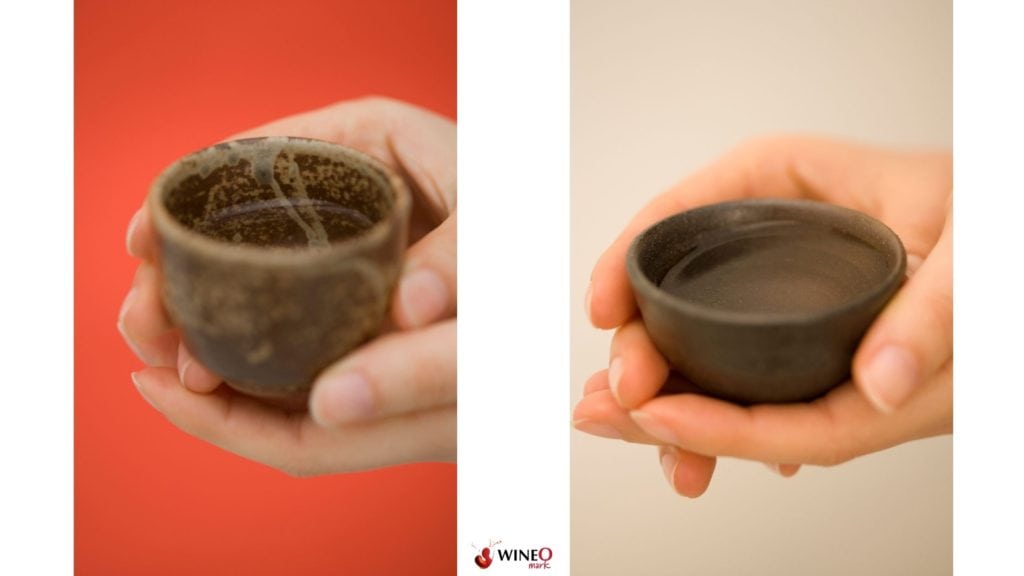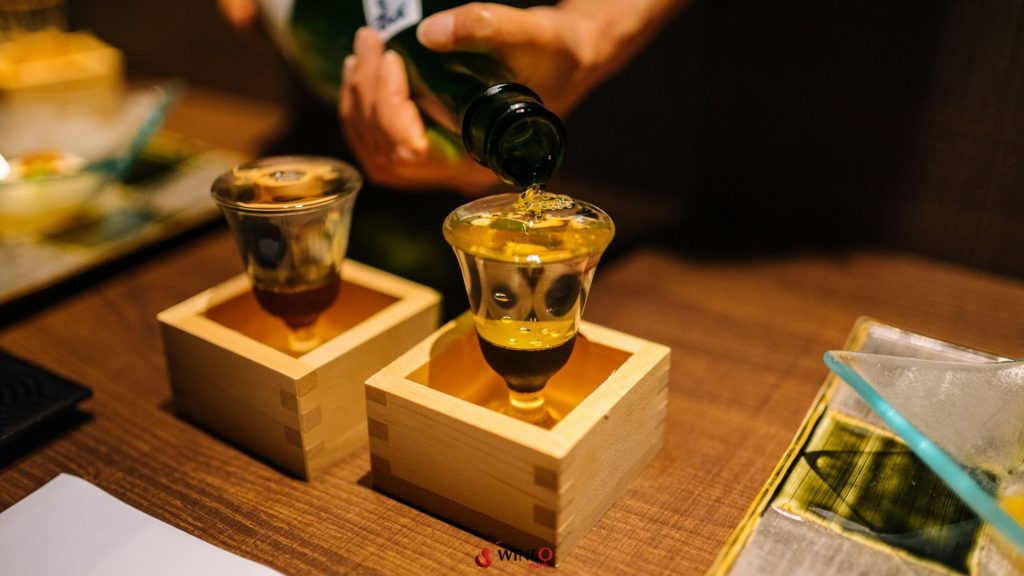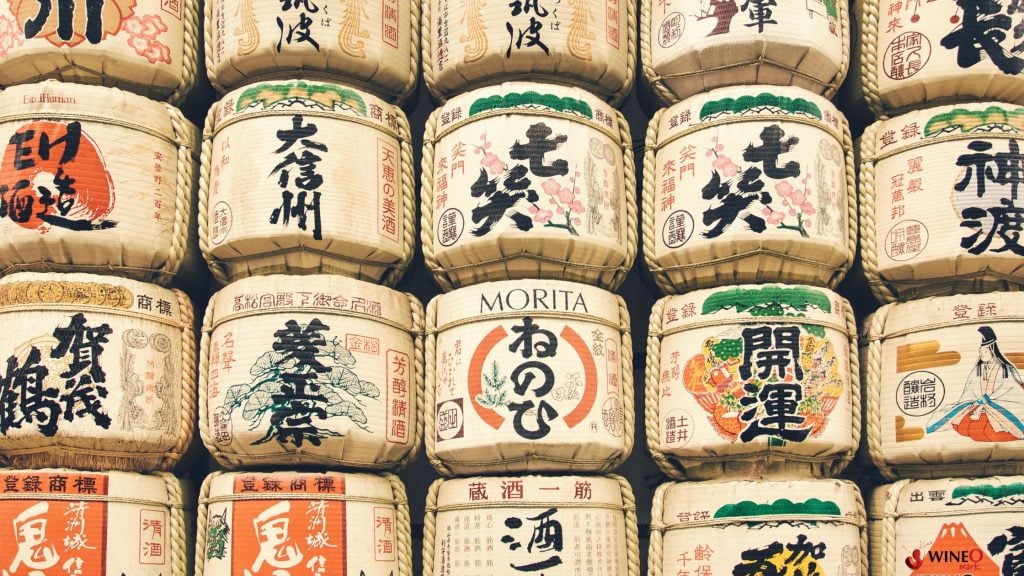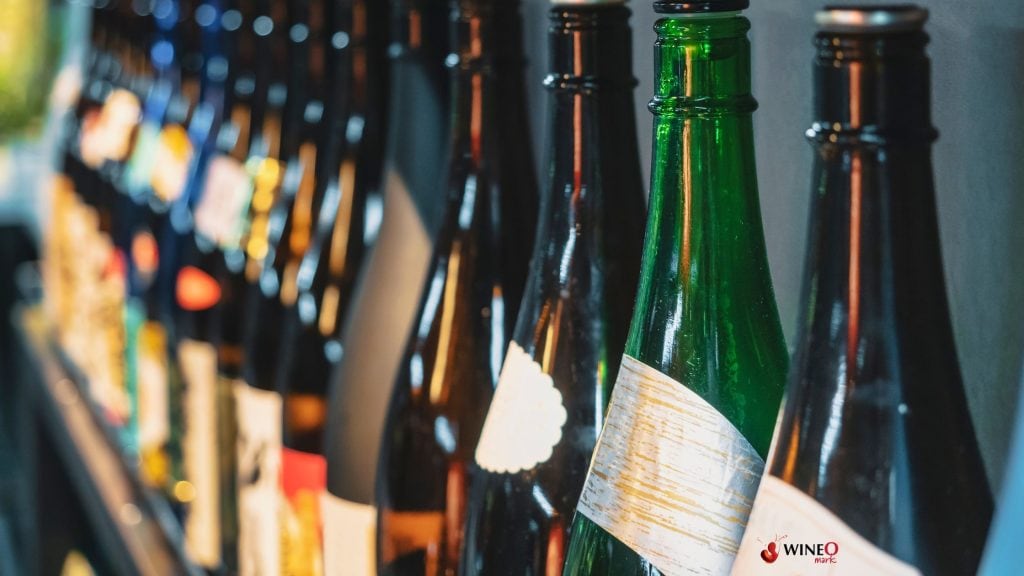
12 Best Lunch Spots In Napa
Best Lunch In Napa – Our 12 Favorite Spots! Lunch is a must when you’re out wine tasting! Whether you’re in the mood for a

Sake, also known as “rice wine,” is the most popular alcoholic beverage in Japan and one that is becoming more popular around the world. While it is often referred to as “rice wine,” sake is actually more similar to beer in terms of its brewing process.
It is made from rice, water, and koji (a type of mold). Sake can be served hot or cold, and it comes in many different styles and flavors. It’s a drink that has been enjoyed by people for centuries, and there are many ways to enjoy it.
In this article, we will discuss the best tips on how to drink sake. We will cover everything from how to choose hot vs cold sake, to how sake compares to beer and wine, and even how strong sake can be.
So if you’re interested in learning more about this delicious drink, keep reading!

One of the most frequently asked questions I receive when discussing Sake. In Japan, Sake is both a festive beverage and a cultural pastime.
So, don’t take it down like a vodka shot since you won’t get the whole flavor and taste of the drink. Sake has been nurtured over many centuries by brewers so you should enjoy it not chug it.
WineO Tip: Drink it more like your favorite wine.
Generally it is served at room temperature, while expensive sake is served chilled.
But it’s up to you!
Keep in mind, the temperature that you drink your sake can greatly affect the taste. Sake is generally served at four different temperatures: chilled sake (cold sake), room temperature sake, warm sake, or hot sake.
Chilled sake is refreshing and light, making it a good choice for summer days or as an accompaniment to lighter fare such as sushi. Room-temperature sake is richer and more full-bodied, making it a good choice for winter days or heartier dishes.
I find that warm sake is smooth and mellow, making it a good choice for anytime you want to relax and enjoy a drink.
The best way to figure out what temperature you like your sake is to experiment! Try drinking sake at all temperatures.

It is common practice in Japanese culture for people to pour sake for one another. Therefore, never pour your own cup.
When serving sake, pour sake for your guests holding the tokkuri (flask) with both hands (palms facing down). Furthermore, it is polite to slightly tip your cup toward the person serving you sake with one hand holding the cup and the other beneath it.
And Japanese sake may be overpoured while being served in a cup inside of a Masu (wooden box). The overflowing is a gesture of kindness and generosity on the part of the host to demonstrate their gratitude for your friendship.
WineO Tip: Even if you don’t pour for others, be respectful.


Sake is meant to be and quite enjoyable to pair with food. It is a versatile beverage that can be enjoyed with all types of cuisine. Sake pairs especially well with sushi, sashimi, and tempura.
If you are drinking sake at home, I recommend serving it with simple dishes such as grilled fish or vegetables.
WineO Tip: The drink, in my opinion, goes down exceptionally well with spicy foods.
Know your basics so you have a better idea of what to order on the menu. There is alot of different types of sake, but lets concentrate on the (3) three main types:
Ginjo and Daiginjo are lighter and more aromatic, while Junmai has a stronger flavor and is generally more acidic. The list above is in descending order from cheapest to more expensive.
WineO Tip: The more polished, the more aromatics that emerge and lift the flavor of the sake, making it lighter and more refreshing.
This is a difficult question to answer because sake comes in so many different styles and flavors. The taste of sake also depends on how it is brewed, how it is served, and what food it is paired with.
In general, sake is a slightly sweet, delicately light, refreshing drink with a well-balanced astringent and savory flavor profile. And sometimes it has a distinct, nutty, fruity scent that is more subtle than other alcohol beverage flavors.
Furthermore, there are also many types of sake that can be quite dry, milk or even very sweet.
Sake can be either filtered or unfiltered. Unfiltered sake, also known as nigori, has a cloudy appearance and is usually sweeter than filtered sake.
WineO Tip: If you’re interested in trying sake for the first time, I recommend starting with a Junmai or Ginjo sake. These are typically lighter and more approachable for first-time drinkers.

Sake is classified into two distinct categories: Futsū-shu (table) and Tokutei Meishō-shu (premium).
Futsū-shu, or “ordinary sake,” is the most common type of sake accounting for about 80% of all production. It’s also the least expensive.
Tokutei Meishō-shu, or “special designation sake,” is premium sake that must meet stricter brewing requirements. This type of sake includes Junmai, Ginjo, and Daiginjo.
WineO Tip: When in doubt, go for the Tokutei Meishō-shu.

Sake is around 15-20% alcohol (undiluted sake can up to 20%), which is slightly higher than wine (which is around 11-15% alcohol) and much lower than hard liquor (which is around 40% alcohol).
The lower alcohol content makes sake a great choice if you’re looking for a light drink that won’t make you feel too drunk.
WineO Tip: If you’re looking for a stronger drink, try a Honjozo or Junmai sake. These have a higher alcohol content and will give you a little more of a buzz.

Pronounce it correctly. Sake is pronounced as “sah-keh”, not “sack-ee”

The vessel/flask and cups used to serve Sake make up the Sake set. The flask is called a tokkuri. A tokkuri is usually bulbous and with a narrow neck, although it may take on various forms, such as that of a spouted serving bowl (katakuchi).
In the past, Sake was sold by volume in a wooden box that measured a cup, known as a masu, which was also used to drink. Nowadays, the sake is typically served in ceramic sake cups. They are generally served in small drinking cups known as “o-choko” or “choko.”
Most restaurants in the United States use a shot glass if they don’t have a choko.
Sake is a Japanese alcoholic beverage made from fermented rice. It is also known as Nihonshu or simply as Japanese Rice Wine.
If you have a type of sake that is intended to be heated, here is a basic way to warm it up:
Prepare a container for heating: Pour the sake into a small carafe, often called a tokkuri in Japan.
Prepare a water bath: Heat water in a pot on the stove. The water should be hot but not boiling – around 50-55 degrees Celsius (122-131 Fahrenheit) is usually ideal.
Heat the sake: Once the water is hot, remove the pot from the stove and place the carafe of sake into the hot water. Let it sit for a few minutes to gradually warm up.
Check the temperature: The goal is to heat the sake to about 40-45 degrees Celsius (104-113 Fahrenheit). You can use a kitchen thermometer to check the temperature, but traditionally, you’d test the warm sake by feeling the bottle. It should be warm, but not too hot to touch.
Serve warm: Once heated, carefully remove the carafe from the water bath, dry it off, and serve immediately. Traditionally, warm sake is served in small ceramic cups known as ochoko or sakazuki.
Remember, heating sake changes its flavor, and not always for the better. If you have a particularly high-quality sake, you might want to try it at room temperature first, to appreciate its original flavor profile.
Chilling sake is a straightforward process. Here are the steps:
Store the Bottle: After purchasing your sake, store it in a cool, dark place until you’re ready to chill it for serving. Sake should be kept away from light and heat to preserve its quality.
Chill the Sake: When you’re ready to serve the sake, place the bottle in the refrigerator. Most sake is best served slightly chilled, around 5-10 degrees Celsius (41-50 degrees Fahrenheit). It should take about 1-2 hours to reach this temperature if the bottle was at room temperature.
Serve: Once chilled, pouring sake into small sake cups (ochoko or sakazuki) and serve immediately. It’s best to consume the sake within a couple of hours once it’s been opened.
Reseal & Refrigerate: If you have leftover sake, reseal the bottle and place it back in the refrigerator. It’s best to consume it within a few days, as sake doesn’t have a long shelf-life once it’s been opened. It won’t go bad in the sense of becoming unsafe to drink, but the flavor and aroma can deteriorate.

Reading a sake bottle can be a bit confusing, especially if you’re not familiar with Japanese. However, there are a few key terms and phrases that can help you understand what’s inside the bottle. Here’s what to look for:
Type of Sake: The type of sake should be listed on the label. This might include terms like “junmai” (pure rice sake), “ginjo” (sake made with rice that’s been milled to 60% of its original size or less), “daiginjo” (a type of ginjo sake where the rice is milled to 50% or less), or “honjozo” (sake to which a small amount of distilled alcohol has been added).
Rice Polishing Ratio (Seimai Buai): This is a percentage that indicates how much the rice used to make the sake has been milled or polished prior to fermentation. A lower percentage means the rice was milled more, removing more of the outer portions of the rice grains. This often leads to a cleaner, more refined flavor.
Sake Meter Value (Nihonshu-do): This is a measure of the sweetness or dryness of the sake. It can be a negative number or a positive number. A higher positive number indicates a drier sake, while a negative number indicates a sweeter sake.
Acidity (San-do): This indicates the level of acidity in the sake. A higher number means a more acidic sake, which can give the sake a fuller, richer flavor.
Alcohol Content: This is typically expressed as a percentage, similar to wine or beer. Most sake falls in the range of 15-20% alcohol by volume (ABV).
Brewery and Region: The label should also include the name of the brewery that produced the sake, and often the region in which it was produced. Different regions of Japan have different sake traditions and styles, so this can give you some information about the characteristics of the sake.
Prefecture: The region in Japan where the sake is brewed. Certain prefectures are famous for their sakes and each has its own characteristics.
Sake is made from rice that has been polished to remove the outer layer of the grain, which contains most of the protein and fat.
Once the rice has been milled, it is washed and soaked in water overnight. The next day, the rice is steamed, which makes it easier to break down the starch into sugars.
After the rice is steamed, a special type of mold called koji-kin is added to the rice. Koji-kin breaks down the starch into sugars, which are then converted into alcohol by yeast. The fermentation process takes about two weeks.
Once the fermentation is complete, the sake is pressed and filtered to remove any solids. It is then bottled or stored in tanks.
Sake is considered to be a type of rice wine, but it is made in a different way than grape wine. Sake is made by fermenting the rice, rather than by fermenting the sugar that is produced by crushing grapes.
Sake is also usually stronger than wine, with an alcohol content of 15-16%, although it can be brewed up to 20%.
And there are also flavor infused sake that are becoming more popular, similar to flavor infused liquor.

Yes, you can drink sake straight. In fact, many people believe that the best way to enjoy sake is to drink it straight, without any food. However, some people do prefer to enjoy sake with food. Drinking sake can be enjoyed either way.
Sake is technically classified as a type of rice wine. However, it is made in a different way than grape wine. Sake is made by fermenting the rice, rather than by fermenting the sugar that is produced by crushing grapes.
The brewing process of Sake is actually similar to that of beer, where starch is converted into sugars, which are then fermented into alcohol.
The acid content of a typical bottle of sake is around twice that of wine. And this adds to the beverage’s umami flavor.
Now that you know a little bit more about sake, go out and try it for yourself! Try different types and see what you like best. You might be surprised at how much you enjoy this delicious Japanese beverage.
Kanpai! (Cheers!)

Best Lunch In Napa – Our 12 Favorite Spots! Lunch is a must when you’re out wine tasting! Whether you’re in the mood for a

North Coast Wine Co. Outerbound Pinot Noir – WineO Mark Review Wine Stats Grape Variety: 100% Pinot Noir Vintage: 2019 ABV: 14% Wine Region: North Coast,

Böen Pinot Noir – WineO Mark Review Wine Stats Grape Variety: 100% Pinot Noir Vintage: 2021 ABV: 14.6% Wine Region: California Flavor Profile: Cherry, raspberry, blackberry,

Merry Edwards Sauvignon Blanc – WineO Mark Review Wine Stats Grape Variety: 100% Sauvignon Blanc Vintage: 2022 ABV: 14% Wine Region: Russian River Valley, California

The Hess Collection Allomi Chardonnay – WineO Mark Review Wine Stats Grape Variety: 100% Chardonnay Vintage: 2019 ABV: 14.3% Wine Region: Napa Valley, California Flavor Profile:

Stags’ Leap Chardonnay – WineO Mark Review Wine Stats Grape Variety: 100% Chardonnay Vintage: 2022 ABV: 14.1% Wine Region: Napa Valley, California Flavor Profile: Oak, vanilla,

Godeval Cepas Vellas Godello – WineO Mark Review Wine Stats Grape Variety: 100% Godello Vintage: 2021 ABV: 13% Wine Region: Valdeorras, Spain Flavor Profile: Peach,

Félix Solís Mucho Más Tinto N.V. – WineO Mark Review Wine Stats Grape Variety: Tempranillo, Syrah Vintage: Non-Vintage ABV: 14% Wine Region: Spain Flavor Profile: Vanilla,
